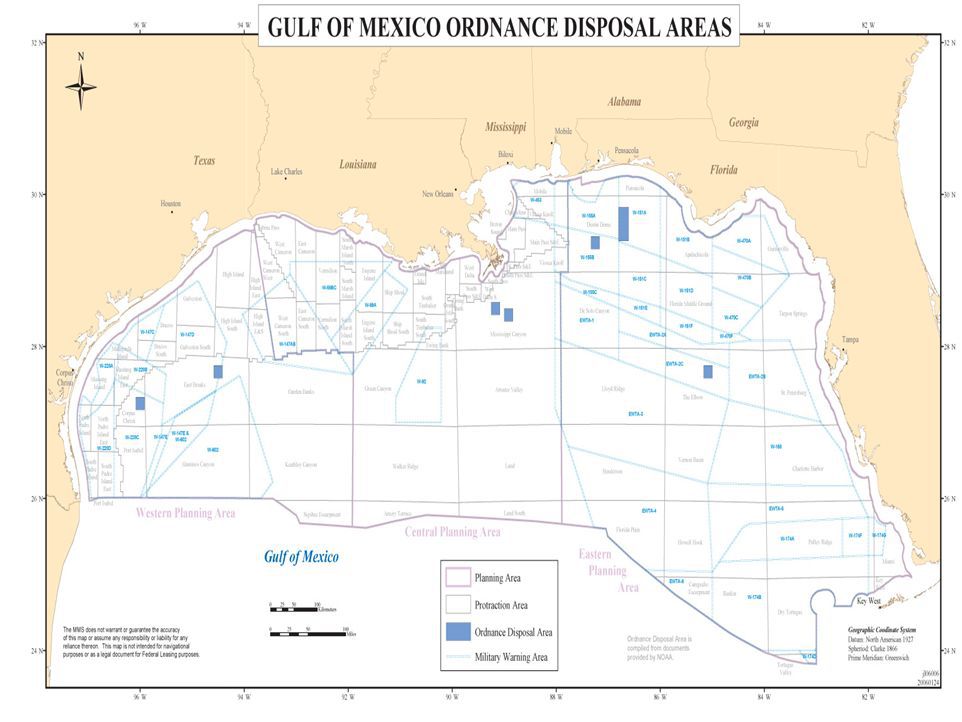04/09/2018 Stati Uniti
“If you ever come across anything suspicious like this item, please do not pick it up, contact your local law enforcement agency for assistance”
A dark legacy of warfare still sits on the bottom of the world’s bodies of water, including millions of pounds of unexploded bombs and other explosive devices. In the Gulf of Mexico, that tally could even include containers of the chemical weapon mustard gas. Some of them are in areas marked for resource exploitation, including fishing and undersea oil drilling, heightening fears they could cause a manmade disaster.After World War II, the U.S. military began dumping surplus munitions into the oceans as a way to get rid of them. According to William Bryant and Neil Slowey, oceanographers at Texas A&M University, at least 31,000,000 pounds of bombs were disposed in the Gulf of Mexico and in the shores off 16 states, including New Jersey and Hawaii. The dumping started in 1946 and ended in 1970.
Fonte: popularmechanics.com
William Bryant e Neil Slowey, oceanografi della Texas A & M University, affermano che 31.000.000 di bombe sono state affondate nel Golfo del Messico e nelle coste di 16 Stati, tra cui New Jersey e Hawaii. Tali operazioni indicano gli studiosi iniziano nel 1946 e terminano nel 1970. Nei fondali sarebbero presenti bombe d’aereo da 250, 500 e 1000 libbre, più munizioni a caricamento chimico compresi contenitori di gas mostarda. Più volte equipaggi dei pescherecci tra le reti hanno trovato anche ordigni inesplosi (aggiunge la fonte popularmechanics.com). Una mappa del Golfo del Messico indica le zone di mare con alte concentrazione di ordigni bellici affondati.
If you find anything that appears to be an explosive device, do not touch it, leave it where it is and call the police. We will contact the appropriate agencies to properly dispose of the item.
Biography of a Bomb





